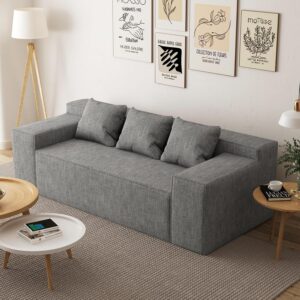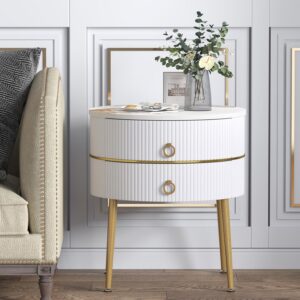Lighting plays a pivotal role in interior design, influencing the mood, functionality, and overall aesthetic of your home. The right lighting can transform a room, making it feel cozy, vibrant, or sophisticated. However, choosing the perfect lighting for each room can be a daunting task. With so many options available, from chandeliers to floor lamps, it’s essential to understand how to tailor your lighting to suit the purpose and atmosphere of each space. In this post, I’ll guide you through the process of selecting the ideal lighting for every room in your home.
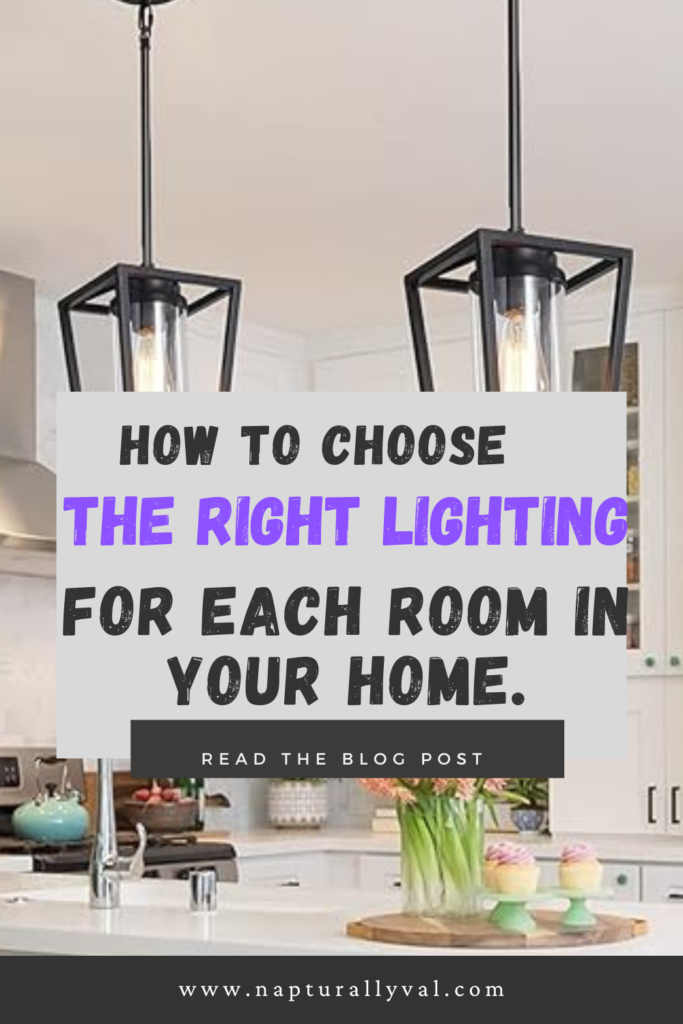
“Disclosure: Some of the links below are affiliate links. This means that, at zero cost to you, I will earn an affiliate commission if you click through the link and finalize a purchase.”
Table of Contents
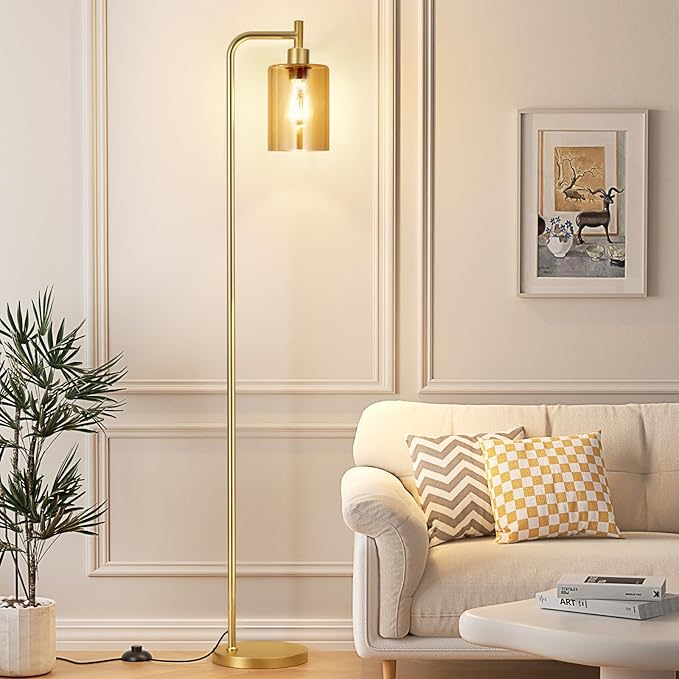
The Right Lighting for Your Home.
1. Understand the Types of Lighting
Before diving into specific room lighting, it’s important to grasp the three main types of lighting: ambient, task, accent, and mood. Each serves a different purpose, and combining them effectively creates a well-balanced and functional lighting scheme.
- Ambient Lighting: This is the primary source of light in a room, providing general illumination. Ambient lighting ensures that the space is evenly lit, allowing for easy movement and visibility. Common examples include ceiling fixtures, chandeliers, and recessed lighting.
- Task Lighting: As the name suggests, task lighting is focused lighting that helps you perform specific tasks, such as reading, cooking, or working. Examples include desk lamps, under-cabinet lights, and pendant lights.
- Accent Lighting: Accent lighting is used to highlight specific features in a room, such as artwork, architectural details, or plants. It adds depth and dimension to a space, often creating a dramatic effect. Wall sconces, track lighting, and spotlights are popular choices for accent lighting.
- Mood Lighting: Mood lighting is used to create a specific ambiance or atmosphere in a room. It’s often softer and more diffused than other types of lighting and can be achieved through dimmable lights, colored bulbs, or even candles. Mood lighting is perfect for creating a relaxing or romantic environment.
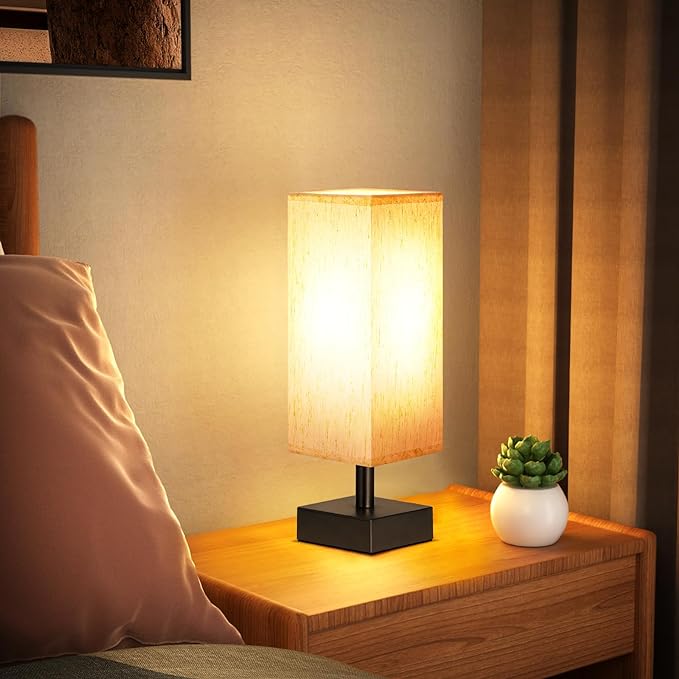
Pro Tip: For a well-lit room, aim to layer all top three types of lighting. This creates a dynamic and versatile environment that can be adjusted to suit different activities and moods.
2. Living Room: A Blend of Functionality and Comfort
The living room is often the heart of the home, where you entertain guests, watch TV, or relax with a good book. Therefore, the lighting in this space needs to be versatile, offering both functionality and comfort.
- Ambient Lighting: Start with a central fixture, such as a chandelier, pendant light, or flush-mount ceiling light, to provide general illumination. If your living room is large, consider adding additional recessed lights or wall-mounted fixtures to ensure even coverage.
- Task Lighting: Task lighting is essential for reading, knitting, or working on a laptop. Floor lamps placed next to sofas or armchairs, and table lamps on side tables, offer focused light where it’s needed most.
- Accent Lighting: To add depth and interest, use accent lighting to highlight artwork, architectural features, or decorative items. Wall sconces, picture lights, or even a small spotlight directed at a piece of art can elevate the space.
Pro Tip: Dimmer switches are a great addition to living room lighting. They allow you to adjust the brightness depending on the time of day or the mood you want to create.
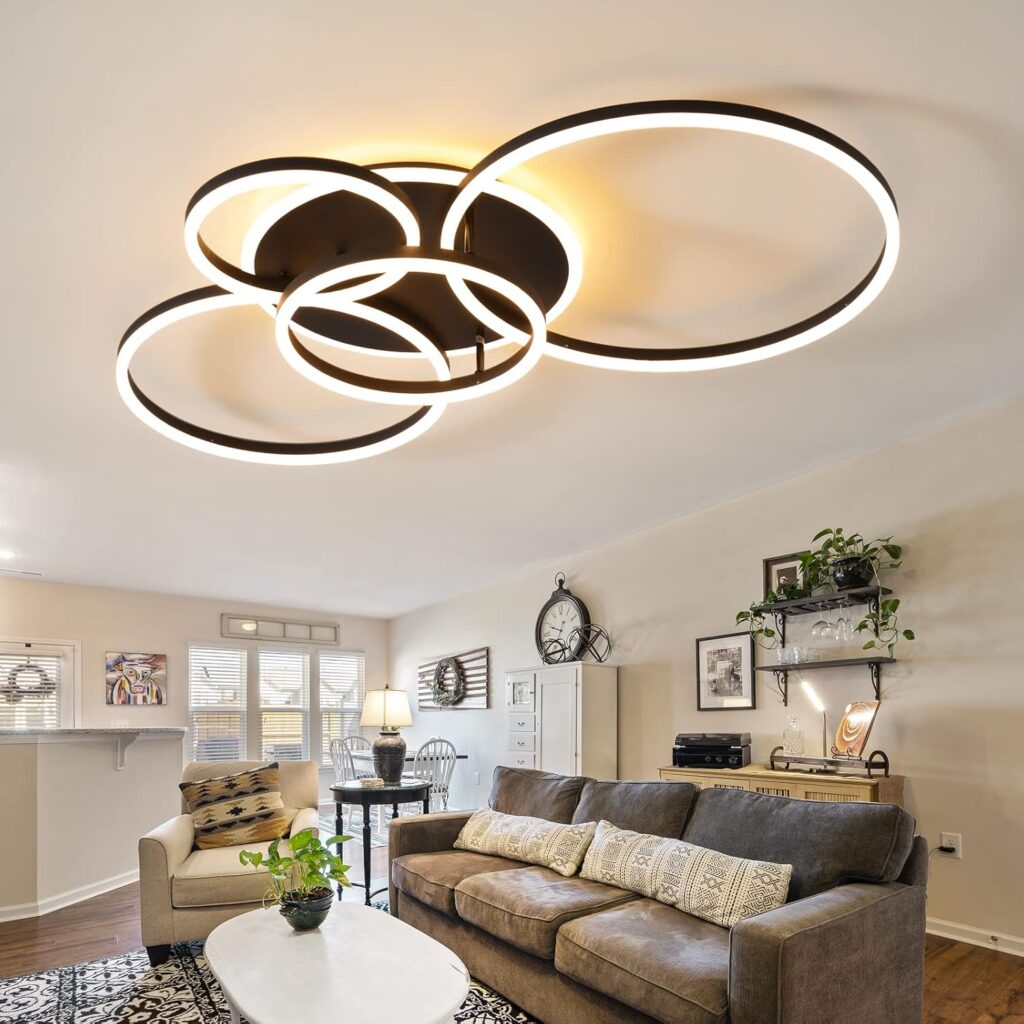
3. Kitchen: Bright and Task-Oriented
The kitchen is a highly functional space where good lighting is crucial for safety and efficiency. Since it’s a hub of activity, your kitchen lighting should be bright, focused, and layered.
- Ambient Lighting: Recessed lighting or a central ceiling fixture is often used to provide general illumination in the kitchen. These lights ensure the entire space is well-lit, making it easier to navigate and work.
- Task Lighting: Task lighting is particularly important in the kitchen, where precise tasks like chopping, cooking, and reading recipes require ample light. Under-cabinet lighting is a popular choice, as it illuminates countertops without casting shadows. Pendant lights over kitchen islands or breakfast bars also provide targeted lighting while adding style to the space.
- Accent Lighting: To enhance the kitchen’s aesthetic, consider adding accent lighting inside glass-front cabinets to showcase your favorite dishware or along the toe-kicks for a subtle, sophisticated glow.
Pro Tip: Choose LED bulbs for the kitchen, as they provide bright, clear light and are energy-efficient, helping you save on electricity bills.
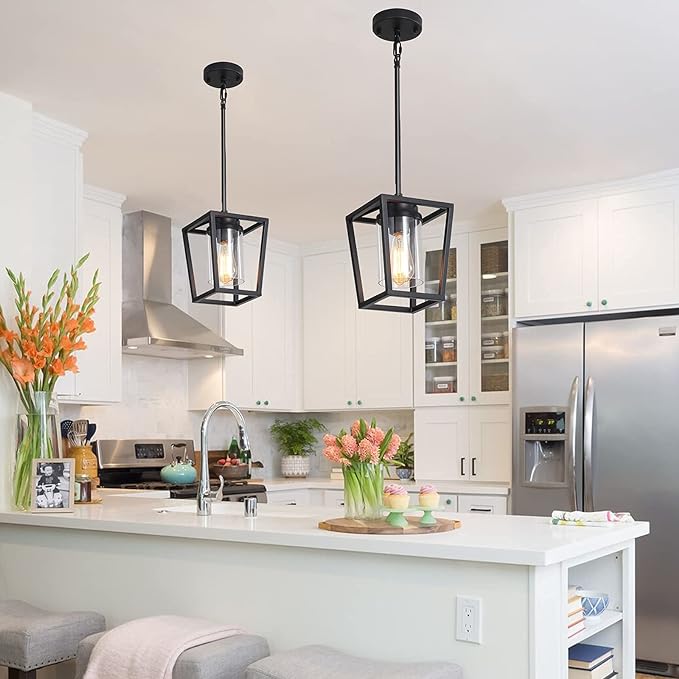
4. Dining Room: Elegant and Inviting
The dining room is a place for gathering, eating, and conversation, so the lighting should be both functional and inviting. It’s also an opportunity to make a statement with a beautiful fixture.
- Ambient Lighting: A chandelier or pendant light over the dining table is a classic choice, offering both style and function. The fixture should be proportionate to the size of the table and hang at a height that provides ample light without obstructing the view. For larger dining rooms, consider additional ambient lighting, such as wall sconces or recessed lights.
- Task Lighting: Task lighting in the dining room might not be as critical as in other rooms, but if you use the space for activities like homework or paperwork, a table lamp on a sideboard or a floor lamp can be beneficial.
- Accent Lighting: Accent lighting can enhance the dining room’s ambiance. Consider installing wall sconces on either side of a mirror or artwork to create a warm, inviting glow. Candles also make excellent accent lighting for intimate dinners or special occasions.
Pro Tip: To create a cozy and romantic atmosphere during meals, opt for a dimmable chandelier or pendant light. This allows you to adjust the brightness and set the perfect mood for any occasion.
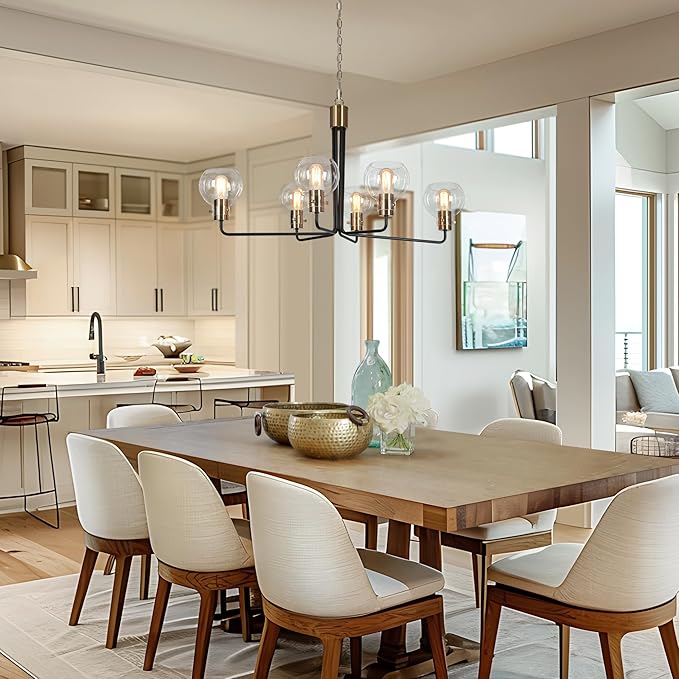
5. Bedroom: Soft and Relaxing
The bedroom is your personal retreat, where the lighting should promote relaxation and rest. The goal is to create a soothing environment while still providing enough light for practical tasks.
- Ambient Lighting: A soft, overhead light is essential for general illumination in the bedroom. Ceiling-mounted fixtures, such as flush mounts or semi-flush mounts, work well, especially in smaller rooms. For larger bedrooms, consider adding recessed lights or wall sconces for additional ambient light.
- Task Lighting: Bedside lamps are a must-have for reading or winding down before sleep. Choose lamps with adjustable brightness to tailor the light to your needs. If you prefer a minimalist look, wall-mounted reading lights or swing-arm lamps are great space-saving alternatives.
- Accent Lighting: Use accent lighting to highlight artwork, a decorative headboard, or an architectural feature in your bedroom. LED strip lights under the bed or inside a walk-in closet can also add a touch of luxury and convenience.
Pro Tip: Consider installing a light with a warm color temperature (2700K-3000K) in the bedroom. Warm light promotes relaxation and is easier on the eyes, helping you unwind after a long day.
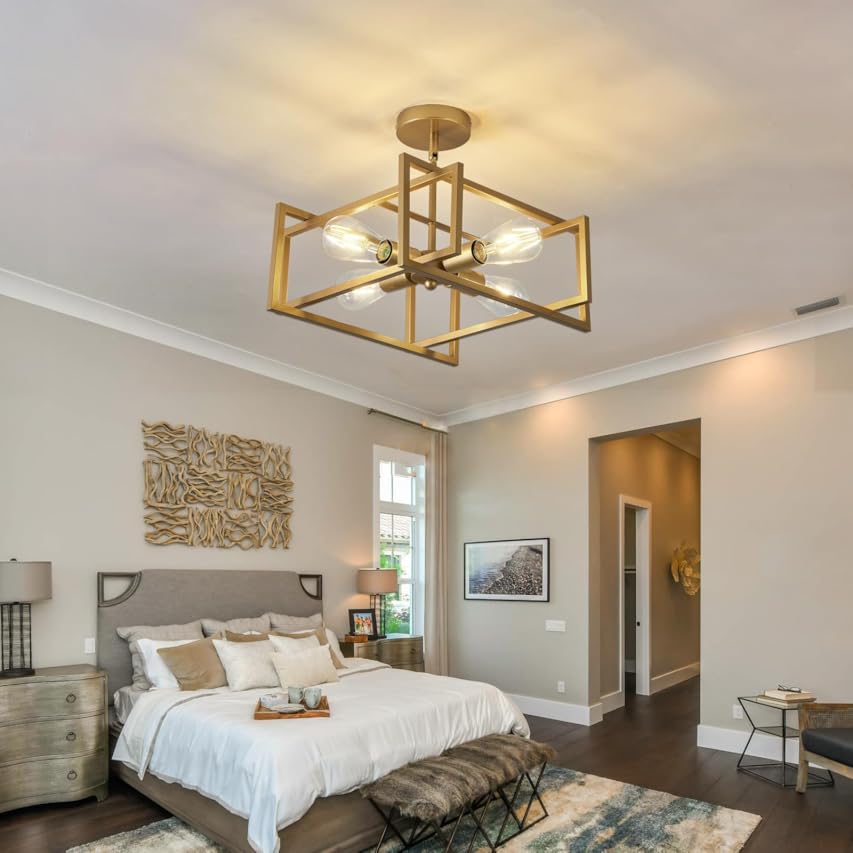
6. Bathroom: Bright and Functional
Bathroom lighting needs to be bright and functional, especially around the vanity area, where tasks like shaving, applying makeup, and grooming take place. However, it should also contribute to a spa-like, relaxing atmosphere.
- Ambient Lighting: Ceiling-mounted fixtures, such as flush mounts or recessed lights, are common choices for general lighting in the bathroom. Make sure the entire space is evenly lit, with no dark corners.
- Task Lighting: Task lighting around the mirror is crucial. Install wall sconces on either side of the mirror to provide even, shadow-free lighting for grooming tasks. If side sconces aren’t an option, a lighted mirror or an overhead light above the mirror can work well.
- Accent Lighting: For a touch of luxury, consider adding accent lighting under floating vanities or around a bathtub. This creates a soft, ambient glow that enhances the spa-like feel of the bathroom.
Pro Tip: In bathrooms, choose fixtures rated for damp or wet locations to ensure safety and durability, especially in areas near the shower or tub.
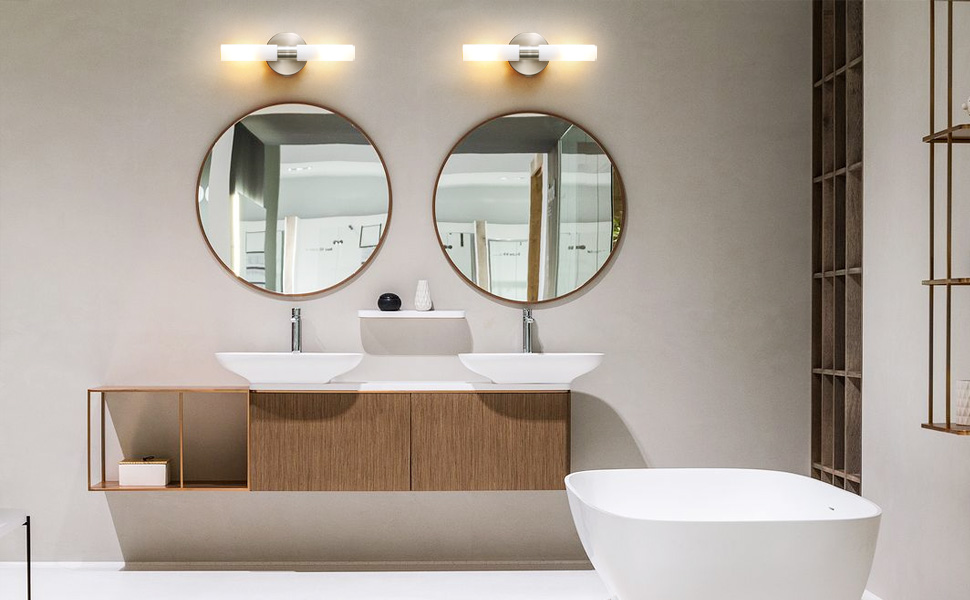
7. Home Office: Bright and Focused
In a home office, the right lighting is essential for productivity and focus. You’ll need a combination of bright, functional lighting that reduces eye strain and helps you stay on task.
- Ambient Lighting: Start with a central ceiling light, such as a pendant or flush mount, to provide overall illumination. Ensure the room is evenly lit, so you’re not straining your eyes.
- Task Lighting: A desk lamp is a must-have for any home office. Choose a lamp with adjustable brightness and direction so you can focus the light exactly where you need it. LED desk lamps are an excellent choice because they provide bright, clear light and are energy-efficient.
- Accent Lighting: Use accent lighting to add warmth and personality to your home office. A small table lamp on a bookshelf, a floor lamp in the corner, or even some string lights can make the space feel more inviting.
Pro Tip: Avoid placing your desk directly under an overhead light, as it can create harsh shadows. Instead, position your task light to the side, and use ambient lighting to fill in the rest.
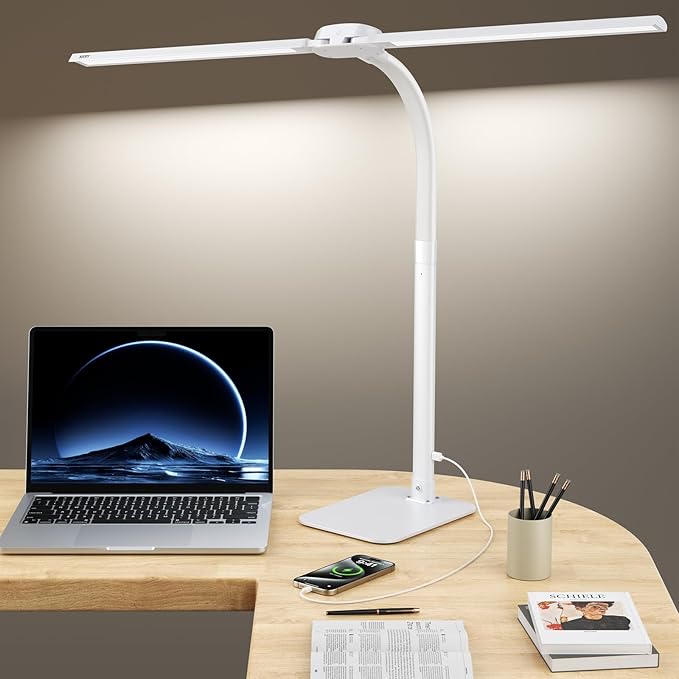
Choosing the right lighting for each room in your home is about more than just picking a pretty fixture. It’s about understanding how light affects the functionality and atmosphere of a space, and layering different types of lighting to create a balanced, inviting environment. Whether you’re updating a single room or your entire home, these tips will help you create a lighting plan that enhances both the beauty and practicality of your spaces.

